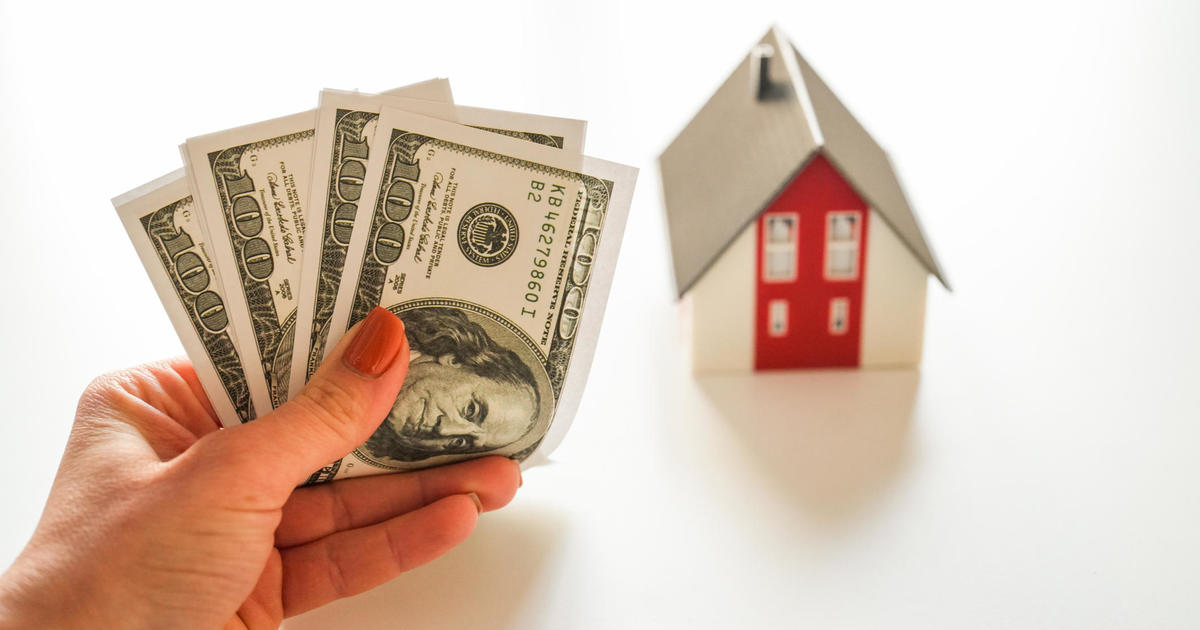CBS News
How to use home equity to purchase a second home

Getty Images
If you’re in the market for a second home, you may consider multiple ways to finance your purchase. Using your home equity is an attractive option for a few reasons. Not only does the average American homeowner have a meaningful amount of home equity at their fingertips, borrowing against that equity typically comes with competitive interest rates. That’s because these loans are backed by your home.
But, if you’ve never used your home equity in the past, you may be wondering how you can access yours for the purchase of your second home. There are a few options to consider, each with its own unique features.
Compare your home equity borrowing options today.
How to use home equity to purchase a second home
There are multiple ways to access your home equity for the purchase of a second home. Three of the most popular options include:
Home equity loans
When you use a home equity loan to purchase a second home, you’ll receive your funds in one lump sum. Considering that the average homeowner has hundreds of thousands of dollars in equity right now, you may be looking at a significant sum. These loans typically come with fixed interest rates and payments. So, you’ll know exactly what your monthly payment will be, making it easier to budget for your second home purchase than it would be if you chose an option with variable rates and payments.
If you need fixed payments, or you believe rates “are going to rise over the next few years, a fixed loan option would be best to secure,” explains Mark Charnet, founder and CEO of the financial planning firm, American Prosperity Group. Though, it’s worth noting that most experts expect rates to start falling later this year. So, if you don’t need predictable payments, you may be better served by the variable rates that come with a home equity line of credit (HELOC).
Tap into the predictable payments that come with a home equity loan now.
HELOC
“If the borrower feels that rates are at a high now with reductions in the future, a variable loan rate would be more to your liking,” says Charnet. If you’re looking for a variable interest rate – one that could make it possible to take advantage of future rate reductions – a HELOC may be an advantageous way to purchase your second home.
HELOCs are lines of credit that are backed by the equity in your home. These loans start with a draw period that usually lasts anywhere from five to 10 years. During this period, you can access your home equity as needed and you’ll make interest-only payments. That flexible access to your equity could come in handy if your second home needs repairs.
After the draw period, the HELOC will move into the payment period phase. This is when you’ll be required to make payments toward the balance and interest on the account. But because these lending options come with variable interest rates, those payments are subject to change over time.
However, that may be good news in today’s high interest rate environment. After all, if interest rates fall, your HELOC’s interest – and minimum payment – will likely fall as well.
Cash-out refinance
A cash-out refinance is another option for funding the purchase of a second home, but likely a less advantageous one since you’ll have to adjust your first mortgage to take advantage of it, which can be problematic in today’s high interest rate environment.
“A cash-out refinance of your existing home mortgage would depend on the loan rate of the older mortgage,” explains Charnet. “If the existing interest rate is higher than the current interest rate, it may be wise to refinance the loan with a lower rate.”
The bottom line
If you’re in the market for a second home, the equity in your primary residence can help you make the purchase. But it’s important to give some thought to how you’ll access your equity. If you need a predictable payment, a home equity loan is likely the way to go. If you can roll with the tides of variable interest and payments, a HELOC may be your better option in today’s interest environment. Finally, in the off chance that your current mortgage rate is higher than today’s refinance rates, a cash-out refinance may be advantageous.
CBS News
Hyundai, Kia recall more than 208,000 electric vehicles over power loss issue

Hyundai and Kia are recalling more than 208,000 electric vehicles to fix a problem that can cause the loss of drive power, increasing the risk of a crash.
The recall covers more than 145,000 Hyundai and Genesis including some IONIQ 5 and IONIQ 6 EVs along with Genesis GV60, Genesis GV70 and Genesis G80 models.
The National Highway Traffic Safety Administration (NHTSA) said the vehicles’ transistors in a charging control unit may get damaged and stop charging the 12-volt battery, “which can result in a loss of drive power.”
In the Kia recall, nearly 63,000 EV6 vehicles from 2022 through 2024 are impacted.
Car dealers will inspect and replace the control unit and a fuse if needed, as well as update software. Owners whose vehicles were recalled earlier this year to fix the same problem will have to visit their dealer again.
Owners will be notified by letter in December and January.
CBS News
Here Comes the Sun: Jack Antonoff and more

Watch CBS News
Be the first to know
Get browser notifications for breaking news, live events, and exclusive reporting.
CBS News
Capturing Moriah Wilson’s Killer – CBS News

Watch CBS News
Be the first to know
Get browser notifications for breaking news, live events, and exclusive reporting.




